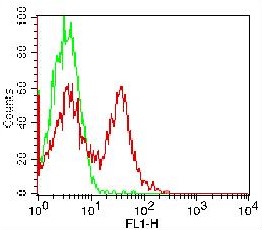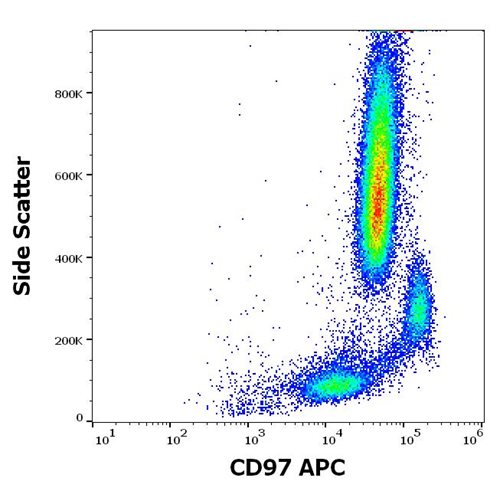Monoclonal Antibody to Mouse CD117 (c-Kit) NALE™ Purified (Clone: ACK2)
Shipping Info:
For estimated delivery dates, please contact us at [email protected]
| Amount : | 500 µg |
| Isotype : | Rat IgG2b, kappa |
| Content : | 2 mg/ml in Phosphate-buffered aqueous solution, ph7.2. |
| Storage condition : | The product should be stored undiluted at 4°C. Do not freeze. The monoclonal antibody was purified utilizing affinity chromatography. The endotoxin level is determined by LAL test to be less than 0.01 EU/µg of the protein. |
The ACK2 monoclonal antibody specifically reacts with mouse CD117 (c-Kit receptor), a 145 kDa transmembrane tyrosine-kinase receptor encoded by the Kit gene. The c-Kit receptor, also known as stem cell factor receptor, is expressed on hematopoietic progenitor cells in adult bone marrow, in progenitors of erythroid and myeloid lineages, and precursors of B and T cells. CD117 enhances the proliferation and the differentiation of the hematopoietic progenitor cells and seems to enhance the development of T cells, as the c-Kit receptor and its ligand are expressed by the thymus.
The antibody has been analyzed for quality through the flow cytometric analysis of the relevant cell type. It is recommended that the reagent be titrated for optimal performance for each application.
For Research Use Only. Not for use in diagnostic/therapeutics procedures.
| Subcellular location: | Cytoplasm |
| Post transnational modification: | Autophosphorylated on tyrosine residues. KITLG/SCF binding promotes autophosphorylation of isoform 1 and isoform 2. Isoform 1 shows low levels of tyrosine phosphorylation in the absence of added KITLG/SCF, while isoform 2 requires stimulation by KITLG/SCF for phosphorylation (in vitro). Phosphorylation of Tyr-573 is required for interaction with PTPN6/SHP-1. Phosphorylation of Tyr-571 is required for interaction with PTPN11/SHP-2. Phosphorylated tyrosine residues are important for interaction with specific binding partners. |
| Tissue Specificity: | Isoform 1 and isoform 2 are detected in bone marrow cells, spermatogonia and spermatocytes, but not in round spermatids, elongating spermatids and spermatozoa. Isoform 3 is detected in round spermatids, elongating spermatids and spermatozoa, but not in spermatogonia and spermatocytes (at protein level). Isoform 1 is widely expressed and detected in fetal liver and bone marrow. Isoform 3 is detected in bone marrow cells enriched in hematopoietic stem cells. |
| BioGrid: | 200957. 18 interactions. |
|
There are currently no product reviews
|
























.png)





.jpg)








